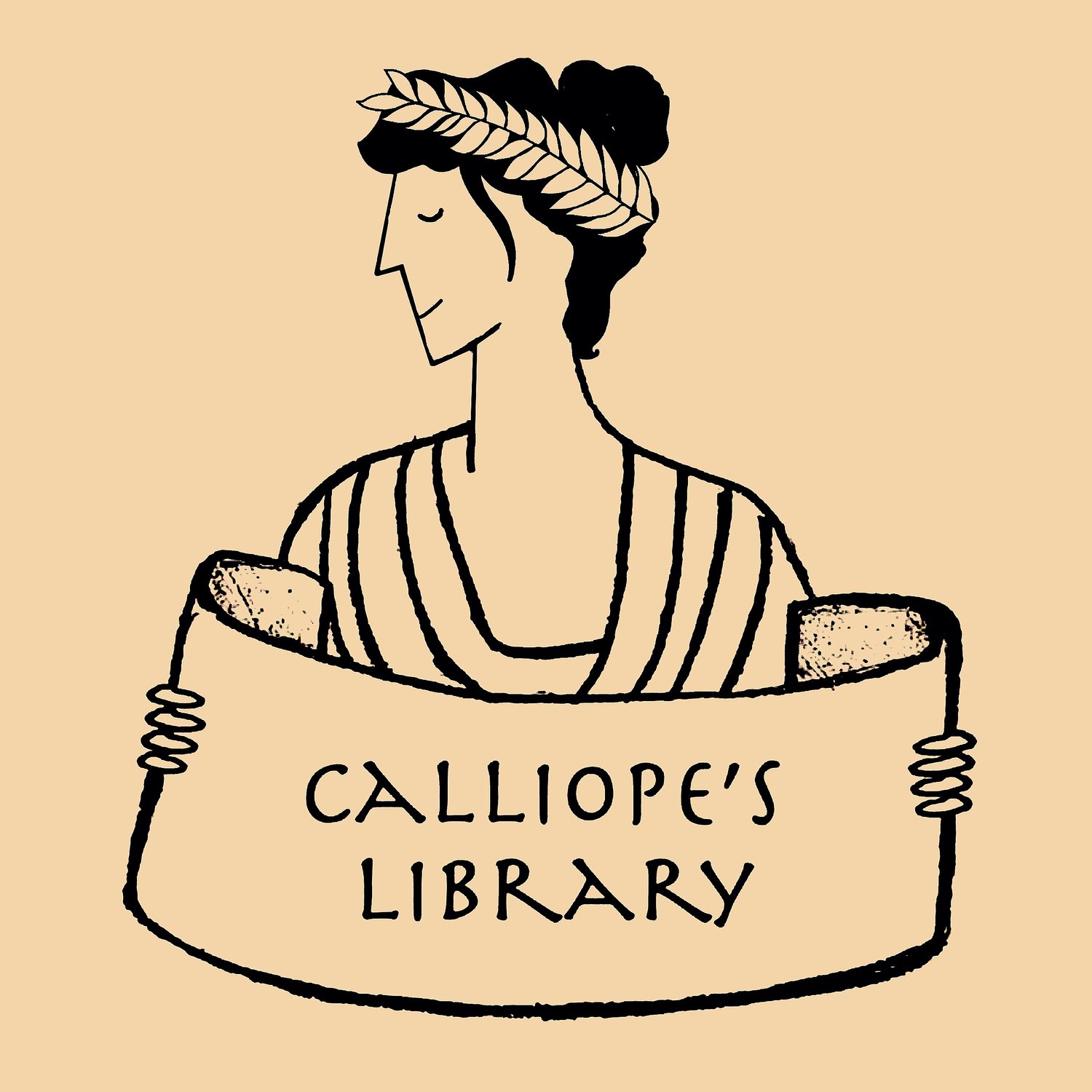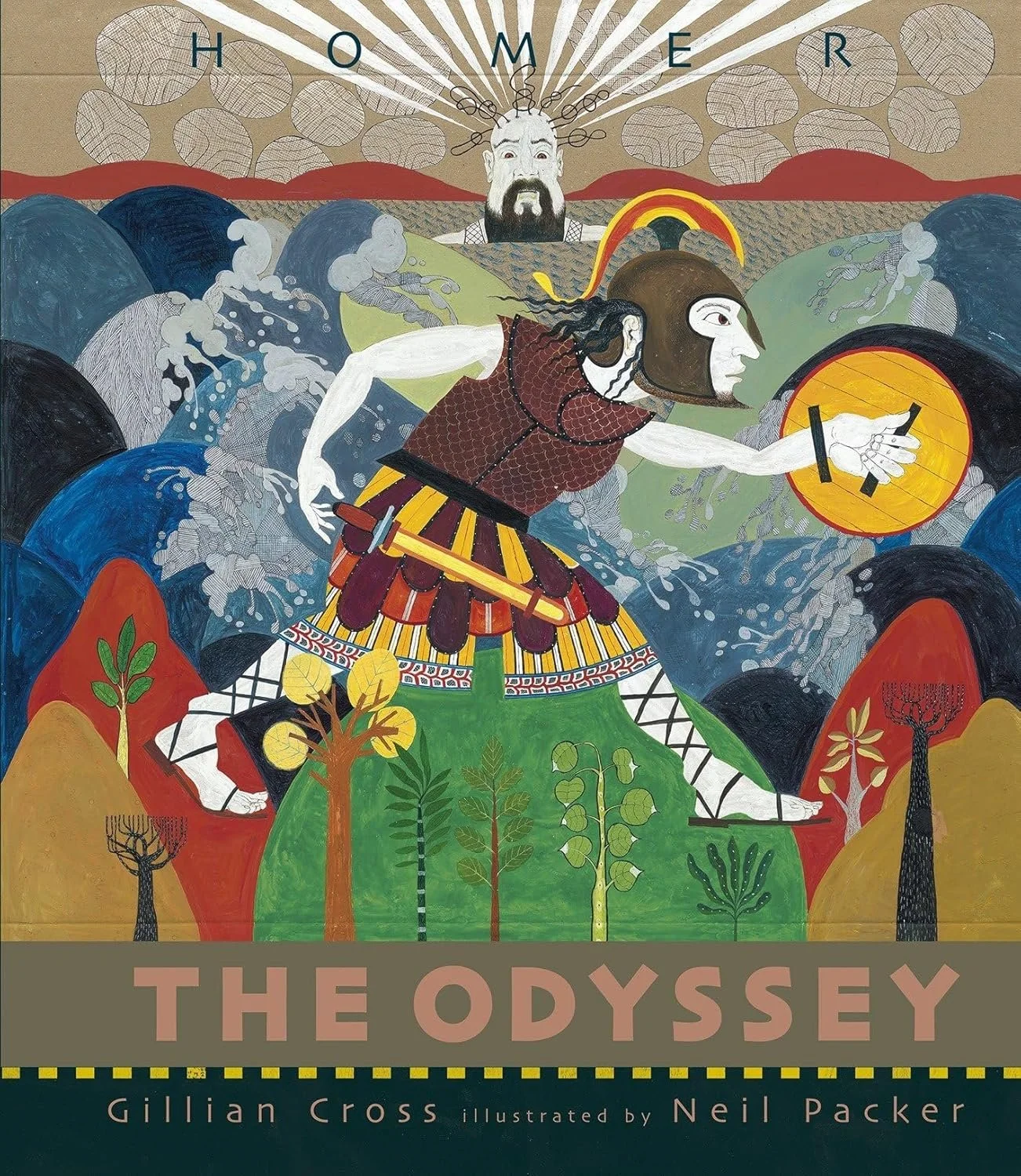Title: The Odyssey
Author: Gillian Cross
Illustrator: Neil Packer
Date: 2012
Tags: Middle grade, Picturebook, Mythology, Odyssey, Ancient worlds(?), English
Readers interested in a scholarly approach to children’s literature may consult this title on Our Mythical Childhood Survey*
The Odyssey by Gillian Cross and illustrated by Neil Packer is one of the most accessible retellings of Homer’s epic for young readers. This version follows Odysseus on his long journey home from Troy, encountering mythical creatures like the Cyclops, the Sirens, and Scylla and Charybdis, while also weaving in the emotional themes of perseverance, loyalty, and homecoming. Cross’s prose is both elegant and clear, managing to distill the complexity of Homer’s poem into something readable without sacrificing its gravitas. Neil Packer’s illustrations are intricate, layered, and symbolic; they add new depth to the story and invite young readers to slow down and look closely. What I love most about this retelling is its ability to retain the grandeur of the original while remaining relatable. Odysseus is not just a legendary hero here, he is a flawed, fascinating human being who faces both monsters and his own mistakes. Cross is careful to give Penelope and Telemachus real emotional weight, making this a story about family, identity, and resilience as much as adventure. This is a book I would recommend to curious readers ages 10 and up, especially those drawn to mythology or fantasy. It is also a wonderful introduction to Homer for middle school classrooms or family read-alouds. While the story includes violence and some intense themes (as any war epic does), it is handled with care and age-appropriate restraint. For anyone looking to inspire a lifelong love of classical stories, this version of the Odyssey is an ideal place to begin. -Lukas (Age 17)
* For further information on the Our Mythical Childhood Survey, please refer to the website of the project “Our Mythical Childhood” [link: http://omc.obta.al.uw.edu.pl/], led by Prof. Katarzyna Marciniak at the Faculty of “Artes Liberales,” University of Warsaw, Poland, with the participation of Bar Ilan University, University of New England, University of Roehampton, University of Yaoundé 1, and other affiliated scholars, within the funding from the European Research Council (ERC) under the European Union’s Horizon 2020 Research and Innovation Programme (grant agreement No 681202).


